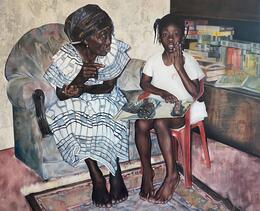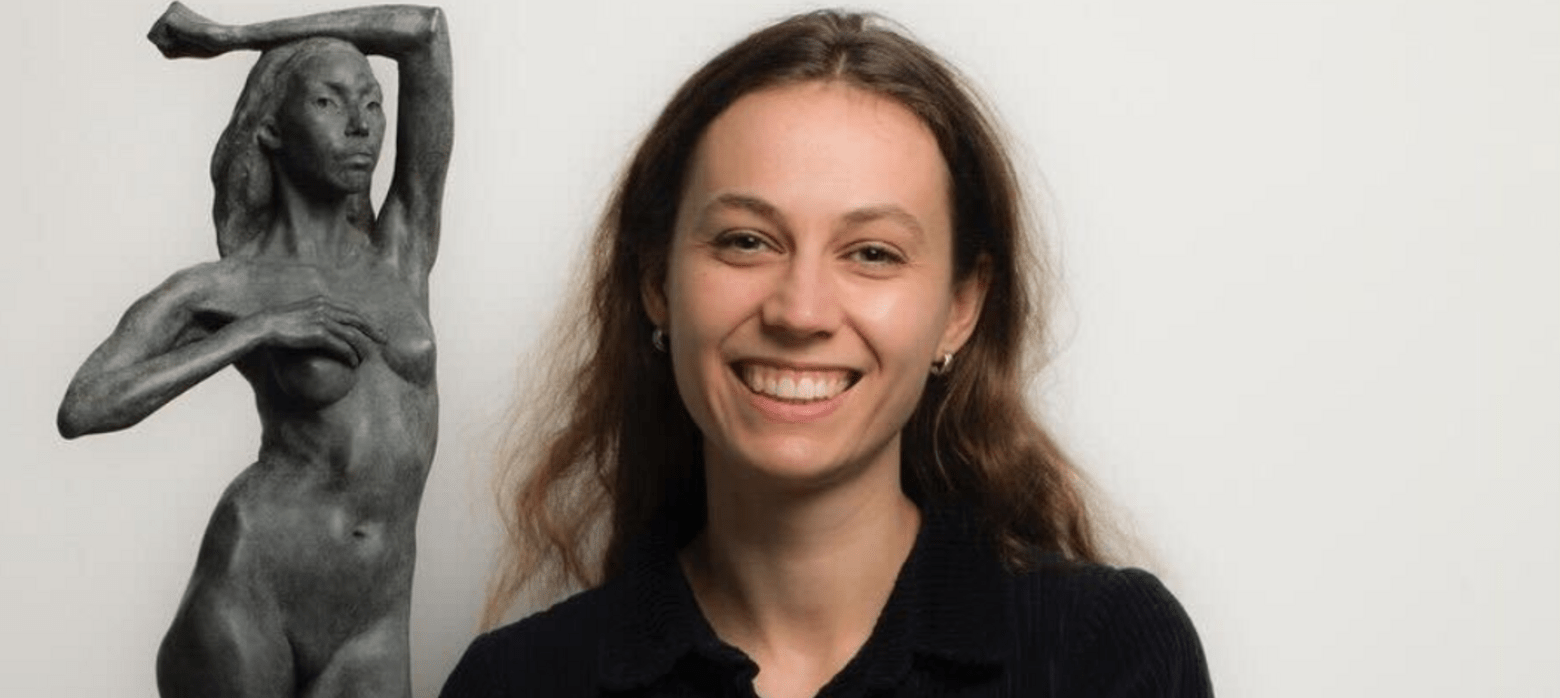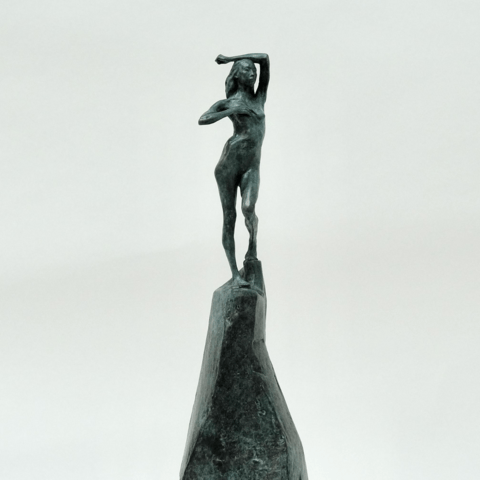Women in Art: Q&A with Poppy Field
Women in Art: Q&A with Poppy Field
On the occasion of International Women’s Day on 8 March 2024, we are excited to celebrate the progress made in promoting gender equality and empowering women, with a special focus in the creative arts sector. Join us in celebrating the diverse achievements of women from all walks of life. To honour this occasion, we have curated a series of Q&A sessions featuring three exceptional artists, including both members and non-members of the Federation of British Artists (FBA).
We had the pleasure to speak with the talented young sculptor, Poppy Field, who is not only a winner of the Hesketh Hubbard Scholarship 2023 but also an exhibitor at the Royal Society of British Artists Annual Exhibition 2024. During our discussion, Poppy shared her insights on navigating the art world as a woman, her sources of inspiration, and valuable advice she would offer to aspiring women artists navigating their creative journeys today.
Could you briefly share details about your work, favourite materials, and artistic inspirations?
When we reflect on mankind's history, we connect with each era through its documents, art, and artifacts. Modelled in clay and cast in bronze, I hope my sculptures will positively contribute to this historical tapestry. I trust you’ll see the modernity in my recent monument of Prince Philip, striding out from a niche on the South Porch of the Royal Albert Hall, and looking across to my depiction of Queen Elizabeth II. What other sculpture embodies his dynamism as a forward-moving man as modern as tomorrow, and pays tribute to their marriage and partnership - one of the greatest love stories of our time?
Poppy Field, 2018. Everything is Now. 207cm (h)
What does being a young woman in the arts mean to you?
It’s a phenomenally exciting time to be a young woman in the arts. When I think of how the world was when Renaissance giants like Donatello and Michelangelo or modern masters like Rodin were sculpting, I know that women did not enjoy the same opportunities I have today. We are enormously lucky to live and work at a time when a female sculptor can achieve their potential.
As a woman sculptor in a field that might be perceived as predominantly male-driven, could you elaborate on your personal experiences and insights?
I began working from the life model at 17, and so have been at ease with the human form for almost half my life. I’m grateful to be able to relate to my subjects and sitters in a way that allows us both to feel a sense of security and emotional intimacy, regardless of their gender or if they are clothed or nude. I often imagine our conversations sneaking in between layers of clay as I sculpt, and have found that capturing that intangible thing, a kind of iconography of moments that someone else might call an essence, presence, or spirit, requires as much listening as modelling of form.
When I discovered your work - original, contemporary, powerful and focused on the female figure - I couldn't help but think of the work of the illustrious Camille Claudel. Would you say that her work has influenced your practice in any way?
That's a fascinating question. Claudel was enormously creative and defied all expectations for female sculptors at the time. The power of her work is undeniable, and her fragment Torso of a Crouching Woman (1884-5) is one of my favourite sculptures. But, as you know, Claudel experienced enormous psychological and emotional pressures that would be unimaginable today. I can only wonder what she might have achieved given the opportunities that I'm privileged to enjoy.
Camille Claudel, 1884-1885; cast by 1913. Torso of a Crouching Women (Front). France. The J. Paul Getty Museum, Los Angeles.
How do you see using art as a means to communicate and bring about positive change in the arts?
You only need to think of someone like Tracey Emin to see that public perception is an ever-changing dynamic. Emerging as a YBA during the 1990s, Emin faced both ridicule and acclaim for her unapologetic autobiographical works. Today, she’s celebrated by the nation for the bravery and nuance of her work, and I think we are all better off for it.
Who are the female artists that inspire you the most today & why?
As a sculptor, the stand-out answer is Rachel Whiteread. She’s redefined space. As a human, it’s Marina Abramović, who has physically and emotionally entangled herself with every observer.
Poppy Field, Iceberg 31x12x11cm.
What advice would you offer to a offer to a young/aspiring female artist navigating the art world?
As an undergraduate at the Courtauld, I was so inspired by a course on Monuments and Memory that it entirely transformed and gave purpose to my aspirations as a figurative sculptor. I remember calling my parents to tell them I’d sculpt a public commission one day. I’m so fortunate that my dream has come true, and I’d encourage every young artist to pursue theirs. If you’re unsure where to start, think about what makes you tick. Having an authentic passion might just be what sets your work apart.


